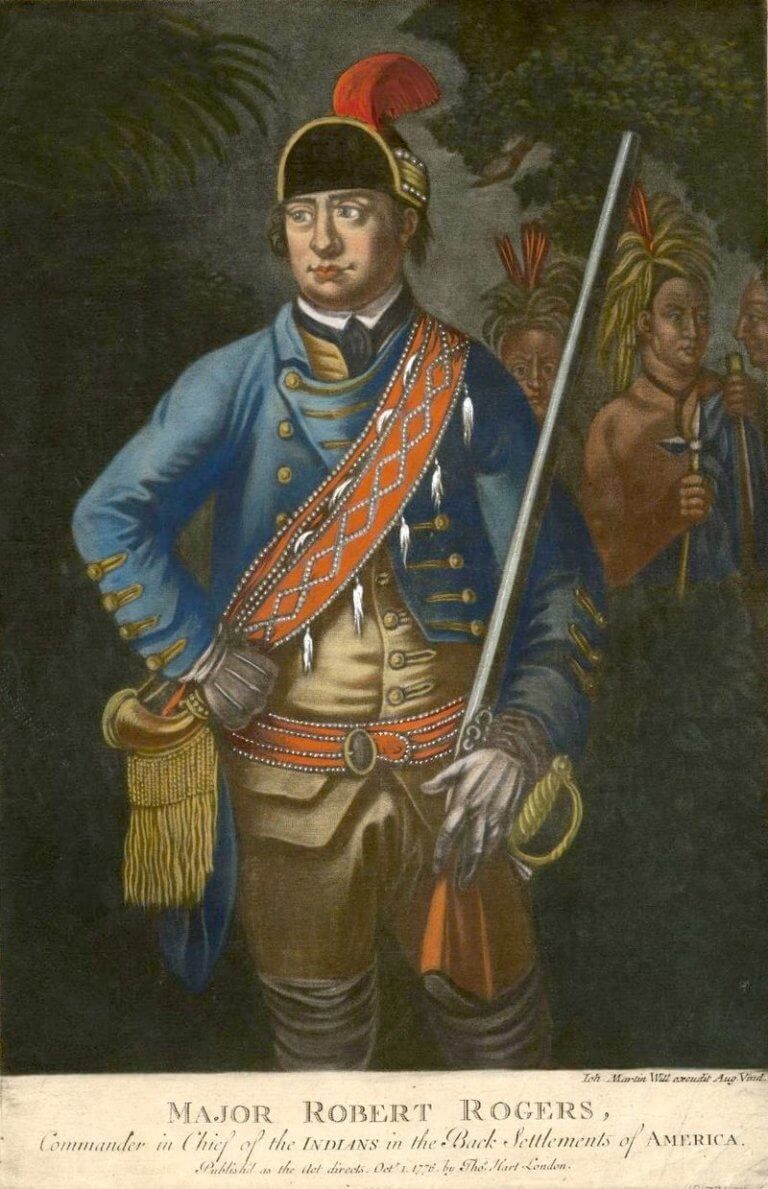ROGERS’ RANGERS
- Program
- Subject
- Location
- Lat/Long
- Grant Recipient
-
NYS Historic
-
Event
- 609 NY State Route 9N, Ticonderoga, NY
- 43.836104, -73.467986
-
Ticonderoga Historical Society
ROGERS’ RANGERS
Inscription
ROGERS' RANGERSAMBUSHED BY SUPERIOR FRENCH
FORCES, ROBERT ROGERS AND
74 RANGERS FOUGHT NEAR THIS
SITE ON JAN. 21, 1757. ALL
BUT 14 RANGERS SURVIVED.
WILLIAM G. POMEROY FOUNDATION 2018
From 1754 to 1763, two of world’s most powerful nations, France and Great Britain, fought for control of North America in the French and Indian War, aka Seven Years War. Out of this conflict emerged the elite British Special Forces unit of Rogers’ Rangers, named after their commander, Robert Rogers. Famous for their backwoods military style and expert skills in reconnaissance, Rogers’ Rangers were not easily surprised. However on January 21, 1757 Robert Rogers and 74 Rangers were ambushed by a larger French force at this site. Against all odds, only 14 Rangers fell, a testament to the skill of this historic military unit.
Tensions between the French and British had been building not just in North America but globally across the two nations’ colonies. The Department of State’s Office of the Historian website states that in North America, the two empires were trying to expand their territorial claims, and as a result, were part of multiple disputes involving ambiguous borders formed by the countries’ respective colonists. Before the war broke out, Great Britain laid claim to the 13 colonies extending out to the Appalachian Mountains. France’s land claims were substantially larger and stretched from Louisiana through the Mississippi Valley up into the Great Lakes area and Canada. One area of overlap that both countries favored was the Ohio River Valley, and in 1754, a British colonial regiment led by then Lieutenant Colonel George Washington tried to remove the French forces. The ambush failed, and after the news of how British forces were attacking in the North American colonies got back to the French government, the war was begun.
At the same time fighting was just breaking out, a man by the name of Robert Rogers found himself facing the very serious consequences of being charged with connections to the production and distribution of counterfeit notes. Along with multiple other men involved in the counterfeit scheme, The History of Rogers’ Rangers (1946) by Burt Garfield Loescher states that Rogers had been brought to the New Hampshire Inferior Court, where he proceeded to claim that “he had temporarily been led astray” but had “forsaken his evil course in alarm.” The accusations were serious and the crime was punishable by death, so Rogers was desperate to find a way to escape the charges. In the end, he had been able to secure a commission from Governor Wentworth of New Hampshire, who at the time had been looking to create a regiment to serve in the Crown Point Expedition. Rogers’ involvement with the regiment brought about the dropping of his charges, as well as Rogers’ Rangers, a military unit known for “its daring accomplishments, heroic defeats, and versatility of characters.”
The war had been going on for almost three years when Rogers recounts in his journal that he had received orders to travel from Fort Edward in New York to Fort William Henry at the southern end of Lake George, and from there, farther north. Recounted in Journals of Major Robert Rogers (1883), the Rangers set out on January 15, 1757, and by the 19th, they had transitioned from walking on the frozen lake to hiking the land in snowshoes. When the men were halfway between Crown Point and Ticonderoga, two sleds traveling from the French fort in Ticonderoga were spotted. It was decided that the Rangers were to try and capture them, and the group was split to initiate an attack on both sides. Before the ambush could commence, up to ten more sleds appeared, and Rogers realized that it would be unwise to follow through with the plan. He was unable to warn the second group, however, and they attacked the original two sleds and captured seven men. Those traveling with the other sleds quickly turned back toward Ticonderoga and reported the attack to the forces stationed there.
A quick retaliatory strike was made by the French and their allies, ambushing Rogers’ Rangers on their retreat back to Fort William Henry. The Rangers were severely outnumbered with only 74 men, but they managed to retreat to safety after losing just 14 in the attack. As of 2019, the marker stands in conjunction with the Rogers’ Ranger marker in Crown Point, with both commemorating the ambush and retreat of Rogers and his men.

